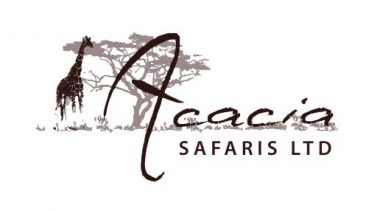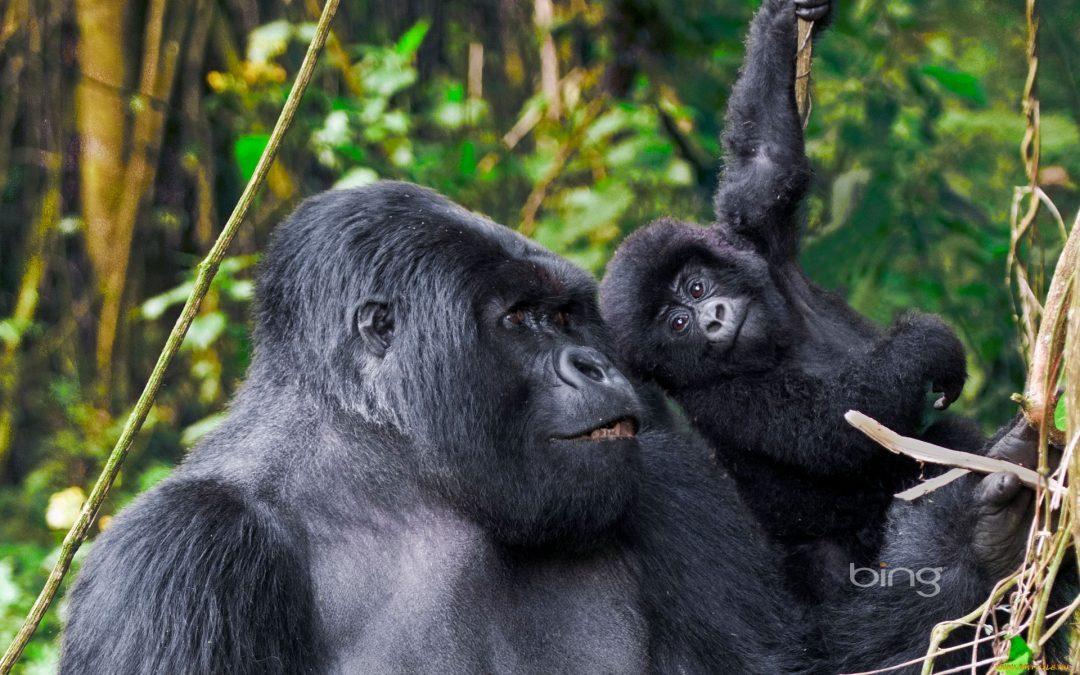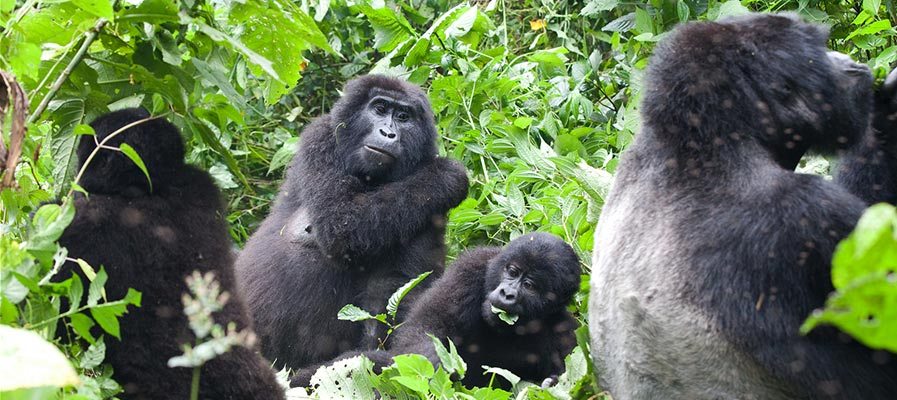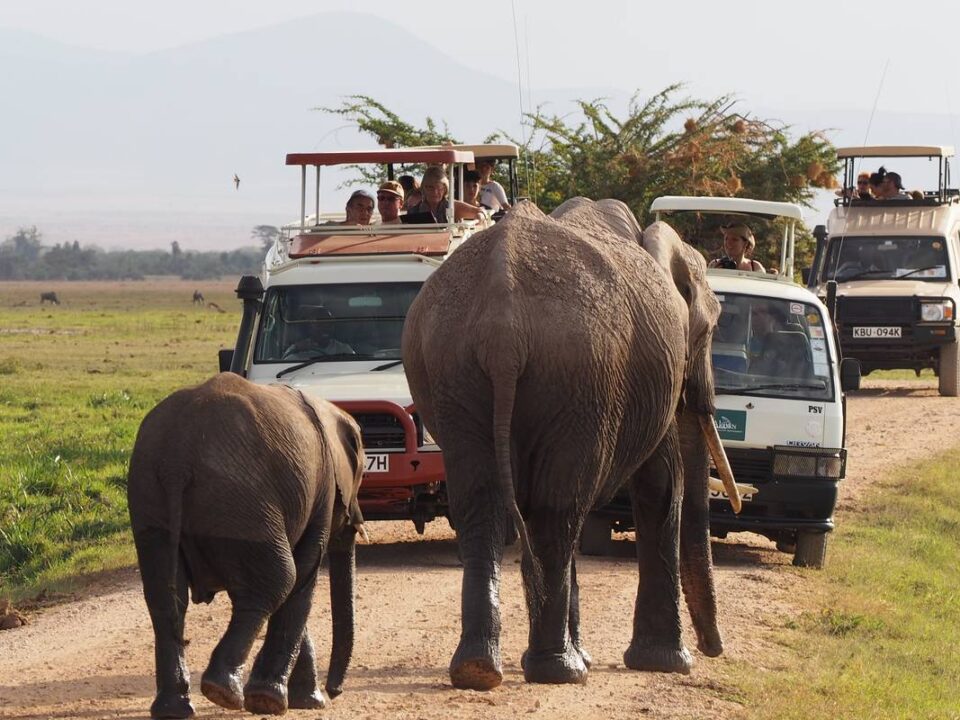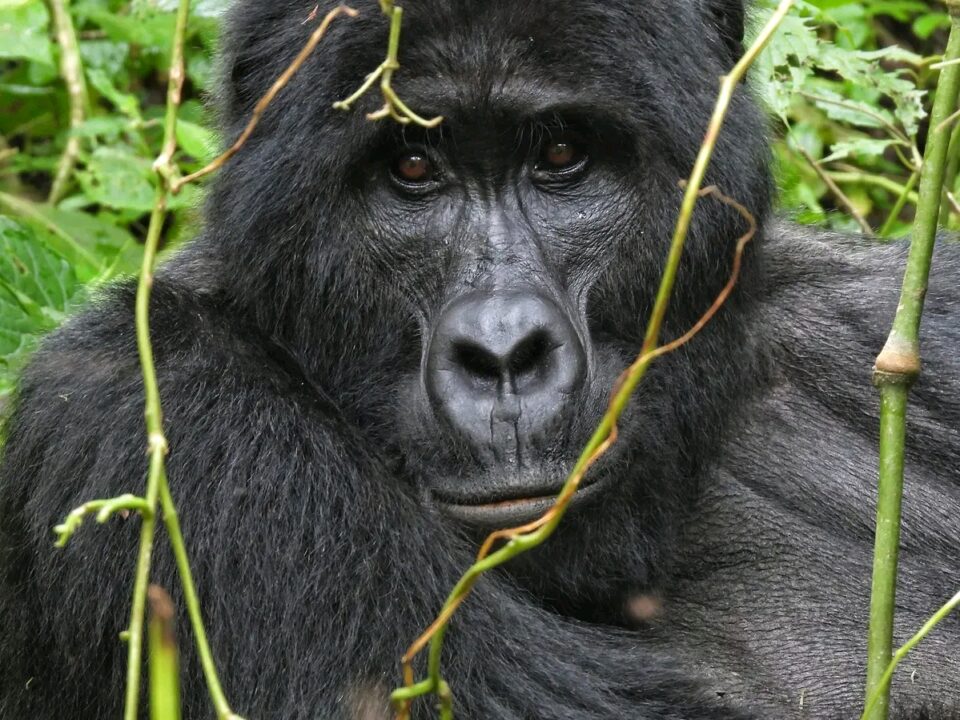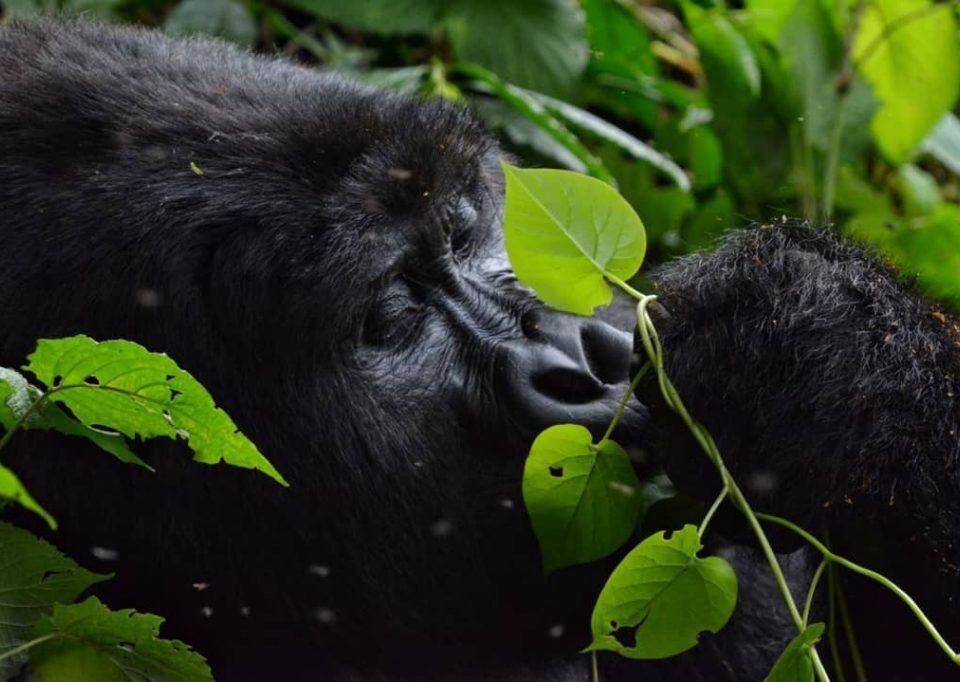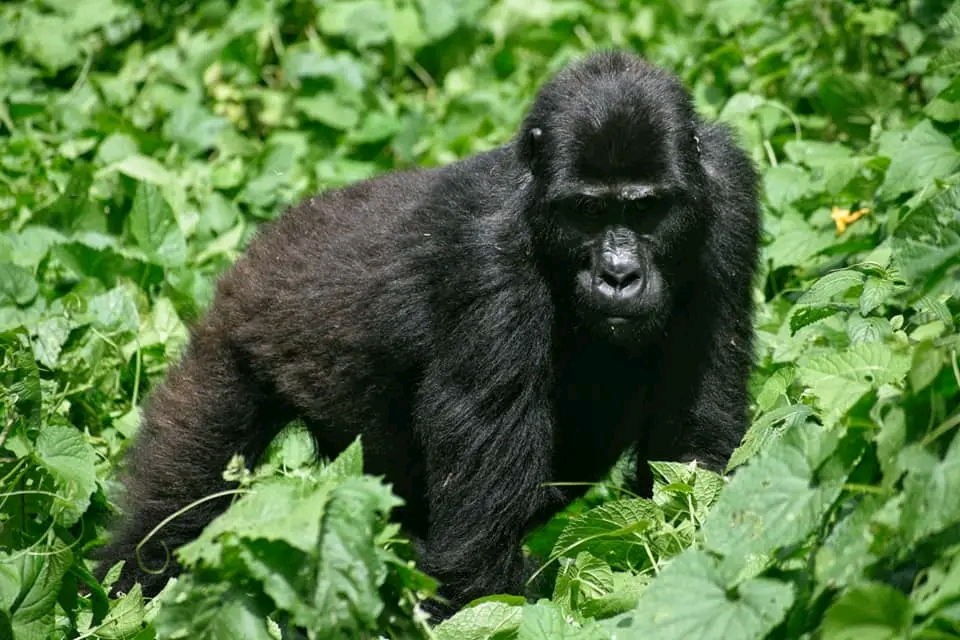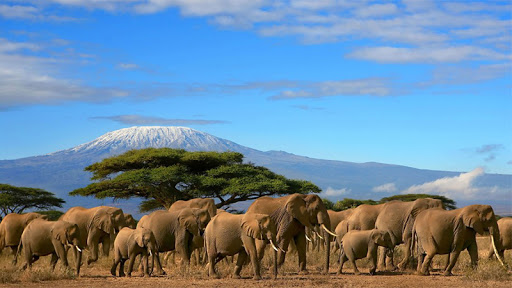
Mountain Kenya National Park Africa
March 19, 2020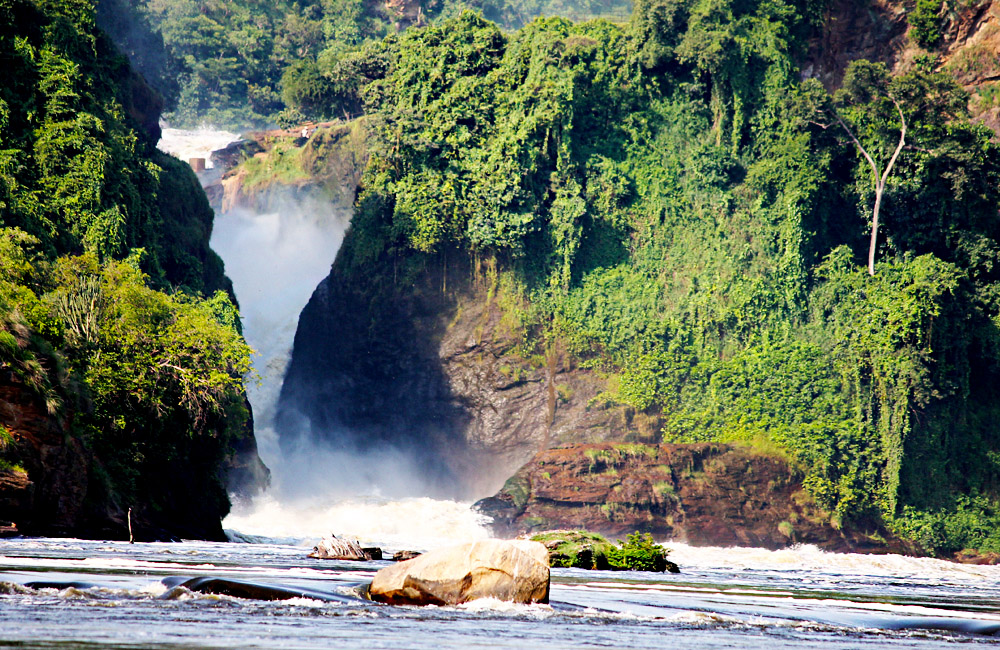
Is Uganda Safe for Tourism?
March 23, 2020How you can help protect mountain gorillas during the COVID-19 Pandemic
Rwanda Sets New Rules on Tourism, Gorilla Trekking Tours & Activities – How you can help protect mountain gorillas during the COVID-19 Pandemic.
Mountain gorillas are one of the only increasing apes with the current population of 1,063 individuals remaining in the whole world. 60% of the 1,063 mountain gorillas are habituated in the presence of persons like the park personnel, tourists, researchers, veterinarians, and many others. It is the habituation process that makes it possible for the mountain gorilla trekking activity.
Currently, it is not yet known if great apes are susceptible to the SARS CoV-2 virus. However, it is well known that great apes including mountain gorillas are susceptible to infection with human respiratory pathogens.
With the fact that in 2009, human metapneumovirus (HMPV) contributed to the death of two mountain gorillas in Rwanda during a severe outbreak of respiratory illness.
Measures to protect eastern gorillas from coronavirus or any pathogens – Gorilla Trekking Tours & Activities
The Gorilla Doctors, suggest that the most effective measure for the prevention of the introduction of SARS CoV-2 virus or any pathogens to human-habituated eastern (mountain and Grauer’s) gorillas in Rwanda, Uganda, and DR Congo is to minimize direct and indirect contact between gorillas and infected people.
Travel bans have been set for travelers from countries that have been affected by COVID-19. For Uganda, travelers have been advised not to tour Uganda unless necessary.
Each person arriving in the country during this period is set to have a mandatory quarantine.
It is advised that, if you are a tourist planning to go gorilla trekking, the following are the most effective actions you can take to protect them.
While these measures may seem simple, they can have a significant impact on minimizing the transfer of infection while we are guests in their home environment;
-
Follow tourism/gorilla trekking rules and regulations
During gorilla trekking, you are advised to maintain a distance of at least 7 meters (21 feet) from gorillas at all times. If the gorillas move closer to you, follow your guide’s instructions to move away.
We understand the desire for closeness and even contact with these extraordinary animals, but even if you do not feel sick, it is possible you are carrying a virus or bacteria without exhibiting symptoms, so any contact could place the gorillas at risk.
-
Do not go gorilla trekking if you are sick – Gorilla Trekking Tours & Activities
If you or anyone with you is sick (e.g. coughing, sneezing, feverish, suffering a sore throat) do not put the gorillas at risk by visiting them. If you feel sick with these diseases volunteer to stay behind and save these rare apes.
-
Practice hygiene
To sneeze or cough while in the presence of gorillas (even if wearing a mask), cover your mouth and nose with the crook of your elbow; do not use your hands.
When you have to use your hands, carry an alcohol-based hand sanitizer with you to disinfect immediately after.
How are the staff and park rangers keeping gorillas safe in Rwanda? – Gorilla Trekking Tours & Activities
At this time, it is not known if gorillas are susceptible to COVID-19. However, the Fossey Fund has put precautions in place to minimize the risk of any possible disease transmission while still providing daily protection and monitoring which is essential for their conservation. Here is what the gorilla conservationists are doing to protect the gorillas;
- Time with the gorillas has been limited. Time with the gorillas to what is necessary to do basic monitoring for health and injuries; after each individual gorilla in a family is seen and evaluated, the teams will move 100 meters away to maintain a protection presence. Our normal research activities have been suspended to decrease the time spent in proximity to the gorillas.
- Prior to going into the field, all field staff is participating in daily health checks (including temperature checks). Any staff exhibiting symptoms or with a fever are not permitted in the field and will be directed to self-quarantine/seek medical assistance.
- Staff is wearing masks while in the field.
- Mandatory hand washing and hand sanitizing procedures at all of our field camps and office have been implemented.
- All staff who have the ability to work from home have been moved to a remote schedule.
- Posters explaining the symptoms of and prevention measures for COVID have been posted in our work areas to educate staff and the community.
- Community engagement activities to reduce the risk of exposure have been temporarily suspended.
- The public exhibit in Rwanda has been temporarily closed.
Rwanda gorilla safaris are the major drawcard for tourism in Rwanda and therefore their conservation is important. If it is necessary and acceptable for you to trek gorillas in Rwanda then ensure to be vigilant and follow the set precautions.
Gorilla Trekking in Rwanda – Gorilla Trekking Tours & Activities
Rwanda is home to Mountain gorillas that live only in three countries the two others being Uganda and Congo. The mountain gorillas are found in Volcanoes National Park.
A gorilla trekking permit in Rwanda costs US$ 1500 for each trek and 80 permits are available each day to enable 8 tourists to trek a single family of the 10 habituated gorilla families in the park.
Rwanda gorilla tour permits are the most expensive but still, travelers have opted to visit the country and leaving out the cheaper permits in Uganda and Congo because it’s said to be easier to trek the gorilla in Rwanda than any other destination.
Other activities/Things to see and do in Rwanda
-
Wildlife/ game drives
Akagera National Park is home to the big five wildlife African game which are the Buffaloes, Rhinos, Leopards, Lions, and Elephants.
Akagera is a much preferable East African destination since it is one of the closest wildlife parks to the country’s national Airport-Kigali international Airport.
It is just about a 3 hours’ drive to the park from the Airport. You also spot other wild animals like giraffes, zebras, and hippos.
-
Birds/bird watching or birding
Rwanda has 703 bird species recorded within her boundaries, 510 species known to be resident and 183 being seasonal and migrant birds.
The best spots for birding in Rwanda are Nyungwe Forest National Park, Akagera National Park, Volcanoes National Park, and several other spots outside the parks.
With a much-vegetated large area, Rwanda arguably offers the best montane birding experiences in Africa.
Other factors that make birding in Rwanda much more relevant are that the country hosts 29 Albertine Rift bird species, there’s a very good road network,, and good security.
-
Canopy walk
The canopy walk is in the ancient Nyungwe Forest on a suspension bridge rising 70m high and covering 60m long.
A canopy walk is one of a kind as you see the forest from above while sighting several bird and primate species. The walk starts from any of the three trailheads where you will walk from the Uwinka visitor center.
If you need a unique safari activity then the canopy walk is a preferable option with experiences like no other.
-
History / Cultural tours – Gorilla Trekking Tours & Activities
Rwanda’s history was largely affected by the 1994 genocide which took the country several years to recover from. With the new government, Rwanda has decided to share her story with the world and therefore several museums in the country describe events that unfolded in the genocide period.
The Rwanda Genocide Memorial Museum has all the details of the genocide. Other museums offer the chance to learn about the traditions of Rwanda. A better way of taking a cultural tour is also by visiting the communities and learning from local guides.
Rwanda tours are amazing, especially for tourists who want to visit a country with diverse wildlife as well as great history. You can also tailor your safari in Rwanda to a Uganda wildlife safari, a safari in Kenya, or a Tanzania safari.
Here are some of the recommended itineraries that tourists can choose when going on the East Africa safari.
3 days Volcanoes park Rwanda gorilla trekking safari
10 Days Rwanda wildlife safaris tours
14 Days gorilla safari Rwanda and wildlife tour
3-Day Murchison Falls Safari Uganda Tour
3 Days Gorilla Safari Uganda Bwindi Impenetrable Park Tour
3 Day Queen Elizabeth National Park Safari
4 Days Kidepo Valley National Park Uganda Safari
3 Day Jinja City Tour Uganda Safari
8 Days Uganda Wildlife Safaris Tour
9 Day Uganda Wildlife Safaris Tour
14 Day Uganda Safari Eco-explorer
15 Days Uganda Wildlife Safari Kigali City Rwanda Tour
Rwanda Safaris Tour Related Searches
- Rwanda Safari Holidays
- 5 Days Rwanda Wildlife Safari
- 6 Days Best Rwanda Wildlife Safari
- 6 Days Rwanda Wildlife Tour
- 13 Days Uganda Wildlife Safari Rwanda Primates Tour
- Rwanda Tourist Attractions
- Birding/Bird watching Safari in Rwanda
- Birding Safari in Rwanda
- Gorilla Tracking Safari Rwanda
- Wildlife Safari in Rwanda
- Wildlife Safaris in Rwanda
- Chimpanzee Tracking in Rwanda
- Gorilla Trekking Safari Rwanda
- Africa Adventure Tours
- East Africa Safaris
- Rwanda Safari

